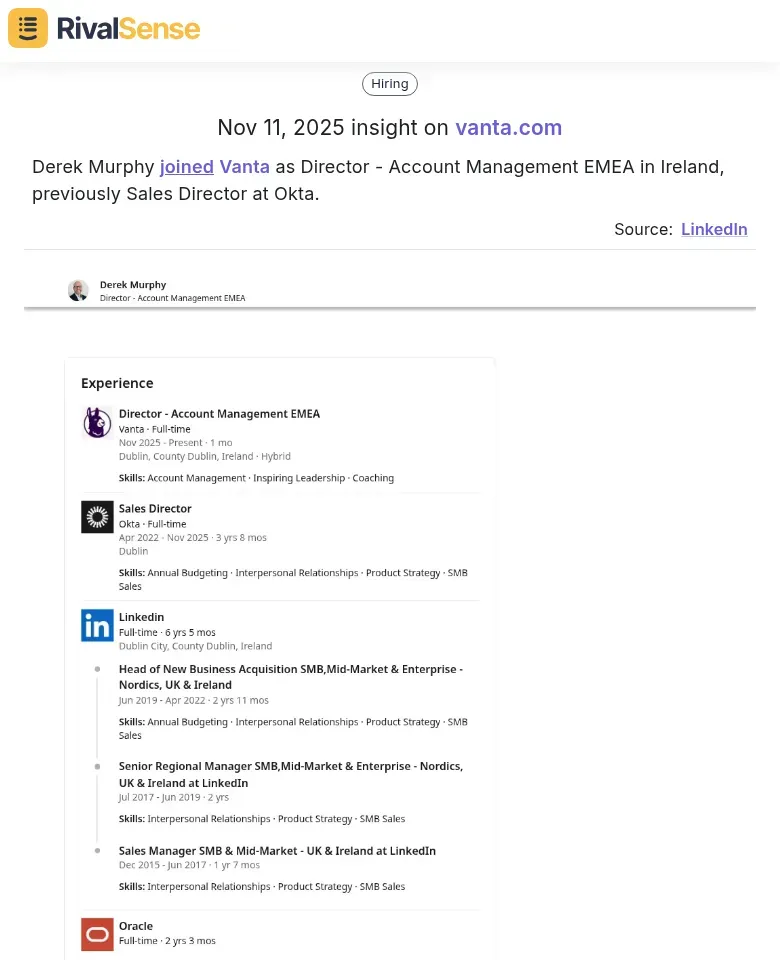Master Mystery Shopping: A Step-by-Step Guide to Outmaneuvering Trust Management Competitors
Mystery shopping is an essential competitive intelligence technique that allows you to anonymously evaluate your rivals' services. In the trust management sector, where client confidence is everything, this method uncovers how competitors build trust through their processes and interactions. By experiencing their customer journey firsthand, you can identify gaps in your own offerings and spot advantages they leverage. For business leaders, these insights drive strategic decisions to refine value propositions, enhance client retention, and differentiate services.
Practical steps include:
- Identify 2-3 key competitors in your niche
- Pose as a potential client via calls, emails, or demos
- Document response times, clarity, and empathy
- Note unique trust-building tactics, like transparency in fees
💡 Tip: Focus on emotional cues—do they instill confidence? Use a checklist to compare findings against your benchmarks. This hands-on approach transforms abstract data into actionable growth strategies.
Step 1: Identify and Prioritize Your Competitors
Identifying the right competitors is the foundation of effective mystery shopping. Start by analyzing funding rounds and investor participation, as companies with recent Series B+ funding or backing from top VCs often signal aggressive growth and market focus—prioritize these for evaluation. Next, track executive engagements and partnerships to reveal key players and emerging threats.
For instance, RivalSense insights can highlight critical moves:
- Funding Participation: Vanta CFO David Eckstein participated in Maxima's $41 million funding round.
 This type of insight is valuable because it indicates a competitor's financial health and expansion plans, helping you focus on high-growth rivals.
This type of insight is valuable because it indicates a competitor's financial health and expansion plans, helping you focus on high-growth rivals. - Management Changes: Derek Murphy joined Vanta as Director - Account Management EMEA in Ireland, previously Sales Director at Okta.
 Tracking such changes is crucial as it signals organizational shifts or regional expansions that could impact competitive dynamics.
Tracking such changes is crucial as it signals organizational shifts or regional expansions that could impact competitive dynamics.
✅ Practical Checklist for Step 1:
- Create a spreadsheet with competitors, funding details, and investors
- Monitor LinkedIn for executive moves and partnerships
- Prioritize based on market overlap and customer segments
Step 2: Design Your Mystery Shopping Strategy
Designing a robust mystery shopping strategy ensures you gather relevant, actionable data. Incorporate leadership insights on industry trends, such as AI in security, to tailor your scenarios—ask how competitors use AI for threat detection or compliance. Develop realistic personas based on their hiring patterns; for example, if a rival is expanding their sales team, pose as a client to evaluate their pitch and onboarding.
Executive engagements provide a window into strategic priorities. For example, RivalSense reported that Vanta CEO Christina Cacioppo discussed the future of AI agents in security with Box CEO Aaron Levie and Volley Games co-founder James Wiltse at the Cerebral Valley AI Summit.  This insight is valuable because it reveals a competitor's focus on emerging technologies, helping you design scenarios that test their innovation and market positioning.
This insight is valuable because it reveals a competitor's focus on emerging technologies, helping you design scenarios that test their innovation and market positioning.
🎯 Set Clear Objectives:
- Assess sales processes (e.g., response time, deal closing)
- Evaluate customer support (e.g., resolution speed, knowledge)
- Analyze product positioning and differentiation
💡 Tip: Use varied personas to test different angles and ensure comprehensive data collection.
Step 3: Execute the Mystery Shopping Process
Executing the mystery shopping process involves simulating real customer interactions to gather firsthand insights. Pose as a potential client via email, phone, or live chat to assess responsiveness and expertise—for example, inquire about setup fees or investment strategies to gauge their knowledge. Document onboarding experiences meticulously, noting how competitors guide you through account creation, document submission, and initial consultations.
Benchmark these against your own processes to identify gaps or advantages in user experience. Gather data on pricing, features, and service quality by engaging directly; ask about tiered plans, included features like reporting tools, and support availability.
📋 Execution Checklist:
- Record response times and staff politeness
- Note any hidden costs or transparency issues
- Vary inquiries to test consistency across team members
- Use a standardized template for easy comparison
Step 4: Analyze and Synthesize Findings
Analyzing and synthesizing your findings turns raw data into strategic insights. Start by comparing competitor strengths and weaknesses against your own offerings using a SWOT analysis—map features, pricing, and support to highlight differentiation opportunities. For example, if a rival excels in user onboarding but lacks advanced reporting, you can capitalize on that gap.
Identify patterns in the customer journey and pain points; look for recurring issues like slow response times or confusing interfaces. Create a visual dashboard or table to spot trends and quantify friction points, such as multiple clicks to access key features.
| Aspect | Competitor A | Competitor B | Your Company |
|---|---|---|---|
| Response Time | 2 hours | 4 hours | 1 hour |
| Onboarding Ease | High | Medium | High |
| Pricing Transparency | Low | High | High |
🚀 Actionable Strategies:
- Prioritize product development based on uncovered gaps (e.g., API integration)
- Craft marketing messaging that addresses common pain points
- Involve cross-functional teams to brainstorm solutions
Conclusion: Turning Insights into Competitive Advantage
Throughout this guide, you've learned to systematically mystery shop trust management competitors, uncovering their service processes and value propositions. These insights are invaluable for benchmarking your services, identifying gaps, and refining your unique selling points to stand out in the market. Remember, mystery shopping shouldn't be a one-off exercise; make it continuous to stay ahead of market shifts and evolving client expectations.
Always prioritize ethical and legal compliance by obtaining only publicly available information, avoiding misrepresentation, and respecting confidentiality. Use a compliance checklist for your team to document methods and ensure data privacy.
🔧 Practical Next Steps:
- Develop a standardized reporting template for findings
- Assign team members to monitor specific competitors
- Schedule quarterly assessments for real-time intelligence
To streamline your competitor tracking and gain insights like funding rounds, executive moves, and more, try RivalSense for free at https://rivalsense.co/ and get your first competitor report today! This tool delivers weekly updates on product launches, pricing changes, and media mentions, helping you stay informed without the manual effort.
📚 Read more
👉 Win-Loss Analysis: Boost Productivity with Financial Competitor Insights
👉 Mastering Competitor Analysis: Insights from Global Events
👉 Track Key Account Feedback: A Practical Guide for B2B Leaders
👉 Cold Chain Logistics Competitor Financial Analysis: Essential Templates and Frameworks
👉 How Microsoft's Visual Studio 2026 Uncovered a Rival's Growth Strategy
